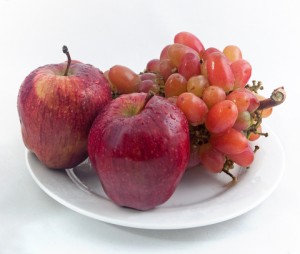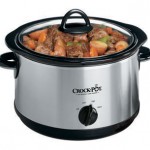Category — Healthy Living
Is Foreign-Grown Produce Safe?
It’s the dead of winter here in the Northeast, and maybe, just maybe you’re tiring of root vegetables? Eating locally is one thing, constant deprivation is another. Pooped out on parsnips? Need some green leafies? Fresh fruits? What to do?
I will admit to spending a fortune on organic blueberries and raspberries in the last few weeks (see yesterday’s “What I Ate” post) . . . they’re super-delicious and refreshing on salads and cereal, or just swimming in non-fat kefir “soup” with cinnamon. And I do buy organic salad greens and baby spinach all year ’round. A Semi-Sweet reader recently asked me: “What about buying produce from other (read: warm!) countries? Is that safe?” Well Sweeties, you ask, I answer!
January 21, 2011 4 Comments
Good News On Slow Cookers
January 13, 2011 6 Comments
Slow Cooked . . . Lead?
I write today with some potentially distressing news. I have heard a rumor that the ceramic liner of your slow cooker might contain unacceptable amounts of lead . . . and that it could potentially be leaching into whatever you’re slow-cooking. Now let me stress that this is, as yet, unsubstantiated. At the end of last week, another mother at pickup approached me and asked me if I knew anything about this – I was shocked (maybe I shouldn’t be?)!
January 10, 2011 4 Comments
Of Cookies & Skinny Jeans & Robbing Peter to Pay Paul
Are you a fan of Semi-Sweet on Facebook and Twitter? If you’re not, you should be – you’ll have access to all manner of “bonus content,” including links to interesting health- and nutrition-related articles, delicious-looking recipes I find, news about goings-on around town, and many days, updates on what I’m eating (you might find something new to try!). A couple of days ago, I posted some tips for making it through the holidays while still fitting into your skinny jeans, and also about baking cookies. And a few people commented – surprised comments like “Hey, idiot! The two are incompatible!”
Well I argue they’re not. [Read more →]
December 2, 2010 5 Comments
Semi-Sweet Reader Challenge: Can You Ban The Can?
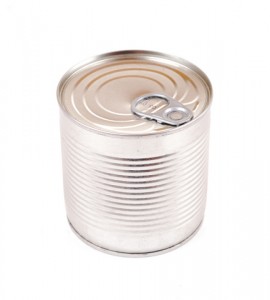
Those of you who’ve been reading me for a while probably saw the list of 10 for ’10 that I published back in January. How’re you doing on those? Specifically, have you worked to reduce your canned-goods exposure? You know you don’t want to consume more BPA than you have to. If you’re still cracking cans regularly, I have a challenge for you . . . can you go one week without using anything that comes in a can? This includes soft drinks, people, if you drink those (which you shouldn’t, but maybe that’s your vice?). Read on for tips ‘n’ tricks and decide whether you’re man- or woman-enough to commit . . . .
5 sweet tips for reducing your canned-goods use:
- Gather an arsenal of recipes that don’t require canned foods. Many of the recipes here on Semi-Sweet don’t call for canned goods . . . and there are a billion on the ‘net. Plan your menus for the week on the weekend and shop accordingly. See also, number 2 below.
- Plan ahead to have more fresh fruit and veg on hand. Again, planning your meals for the week in advance can help with this. You might also want to consider buying a Community Supported Agriculture, or CSA share. And when you can’t get to the market, frozen fruits and vegetables are a great alternative to canned. Always have some fan-favorites on hand.
- Make soup from scratch. Take a little extra time on the weekend and prepare a big vat o’ soup – pop extra servings in the freezer or eat off the vat all week. Indulge your kid’s chicken-noodle obsession by floating her favorite noodles (pre-cooked) in low-sodium chicken broth (from a box, people!) or better yet, use your own homemade stock.
- Go with dried beans. Canned beans are über-convenient, but cooking dried is cheaper and pretty simple, with a little forethought. Check out my post here. Remember, you can freeze your home-cooked beans so they’ll be just as convenient as canned.
- Seek safer packaging. Look for tomato paste in glass jars, stock in a box, tomatoes in glass jars or tetra packs. Choose soups, juices and other foods packaged in cardboard cartons made of layers of aluminum and polyethylene plastic (labeled with a number 2 recycling code). Choose plastic, or even better, glass bottles for beverages. If you don’t already have one, get yourself a re-usable water bottle – stainless steel is best.
Do you have a need to read? The EWG provides a boat-load of information on BPA exposure from canned foods.
What’s the hardest canned-good for you to give up? I’ll start – I love tinned sardines in mustard sauce. I don’t eat them every week (lots of salt), but once in a while I love them on toast. Little unusual, I know, but I’ve not seen an alternative packed in glass . . . .
April 19, 2010 2 Comments
Good Advice: Live a Little!
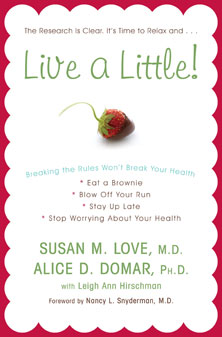
I just read a book that I think you might really like – it’s called Live a Little! Breaking the Rules Won’t Break Your Health by Susan Love, M.D. and Alice Domar, Ph.D. For the uninitiated, these two are power-people in women’s health and psychology. Susan Love wrote the bible on breast cancer, and Ali Domar is a psychologist and mind-body medical expert. I’ve benefited from both of them, indirectly – I pored over Love’s Breast Book during my cancer diagnosis and treatment, and while in treatment, I participated in the Mind-Body Program for Cancer Patients at the (then) Mind-Body Medical Institute at the Beth Israel Deconess Hospital in Boston – Ali Domar was there, then, running her fabulously successful and interesting program for women with infertility issues. [Read more →]
March 3, 2010 3 Comments
More On BPA, Including “Sneaky Sources”

The plot thickens on BPA. Jennifer Grayson’s two-part article is super – it reminds us of some places where we already know BPA lurks, and gives (me at least) some new info. Part 1 is here, Part 2 here. Pizza boxes and cash register receipts? Who knew???
And here is a link to some BPA-free canned goods (Eden+).
February 11, 2010 No Comments
Selective Eaters: Survival Tips
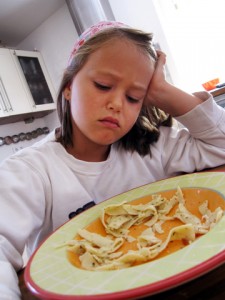
Forget the “war on terror” for a minute. Is your kitchen table a combat zone? If your answer is yes, even sometimes, read on. Elizabeth Ward, a registered dietitian and mom, weighs in on one of the most vexing issues for parents everywhere . . . how to deal with a picky eater.
*************************************************************
Your toddler’s on a two-month run of wanting only peanut butter and jelly on white bread with the crusts cut-off – for breakfast, lunch, and dinner. Perhaps your five year-old refuses to try any new food. Or, your child barely touches his food at mealtimes, much to your chagrin.
While selective (a.k.a. picky) eating and a poor appetite are more common among the younger set, preschoolers and younger school children are not immune. Question is, how should you deal with a child who turns up his nose at novel foods, demands the same foods at every meal, or who eats like a bird, without getting completely aggravated?
First of all, don’t take a child’s behavior personally. Rejecting new foods, or the balanced, well-planned meals you make, has nothing to do with you or your parenting skills. Hard to believe when you’re in the middle of a “food fight,” but true.
Here are some other strategies that may help you better handle erratic eating in your youngster.
• Banish grazing. As much as possible, schedule meals and snacks for your child to better regulate his appetite. I don’t recommending complete rigidity, but children need to know that eating occurs at about the same time every day. When your child doesn’t finish his meal, save the rest for later; rest assured, he’ll be hungry in an hour or two. Don’t allow your son or daughter to graze on so-called snack foods (Goldfish, anyone?) between meals, and don’t let him or her cruise around all day with a sippy cup of water, milk, or juice within arm’s reach.
• Let kids make (healthy) choices. Allowing kids to make choices increases their interest in eating. Let them choose between a banana or an apple; whole wheat bread or whole grain cereal; or green beans and carrots. They may pick the same foods over and over, but that will eventually stop, hopefully before you’ve been driven completely crazy.
• Understand their resistance to new foods. Children spend their days learning and mastering new skills like walking, running, climbing, and talking, and are so consumed by novel experiences and sensations that they often don’t want any surprises on their plates. That may be why a child latches on to favorite foods to the exclusion of new ones. Don’t worry. It won’t last forever.
• Serve new foods early in the day. Children get tired as the day wears on, and being confronted with a new food may be the last straw for a worn-out toddler or preschooler. Serve children something new at breakfast or lunch or just after a nap, when they are well-rested, and hungrier.
•Keep trying new foods. Always serve a small amount of a new food alongside your child’s favorites. Expect to serve that food at least 15 times before your child accepts it, or even acknowledges it. Encourage them to try it, but don’t go overboard.
• Put on your best Poker Face. Kids crave attention, even when it’s negative. When you get upset when your child rejects a food or won’t eat and you’re tempted to show your emotions, don’t. Older toddlers in particular are fast learners. They remember that refusing to eat what you put on their plate, or demanding the same thing for breakfast, lunch, and dinner pushes mommy’s buttons! And they’ll push those buttons, over and over.
Elizabeth Ward is a registered dietitian, mother of three, and author of Expect the Best, Your Guide to Healthy Eating Before, During, and After Pregnancy, and The Complete Idiot’s Guide to Feeding Your Baby and Toddler. Visit her at: www.expectthebestpregnancy.com.
February 4, 2010 3 Comments

